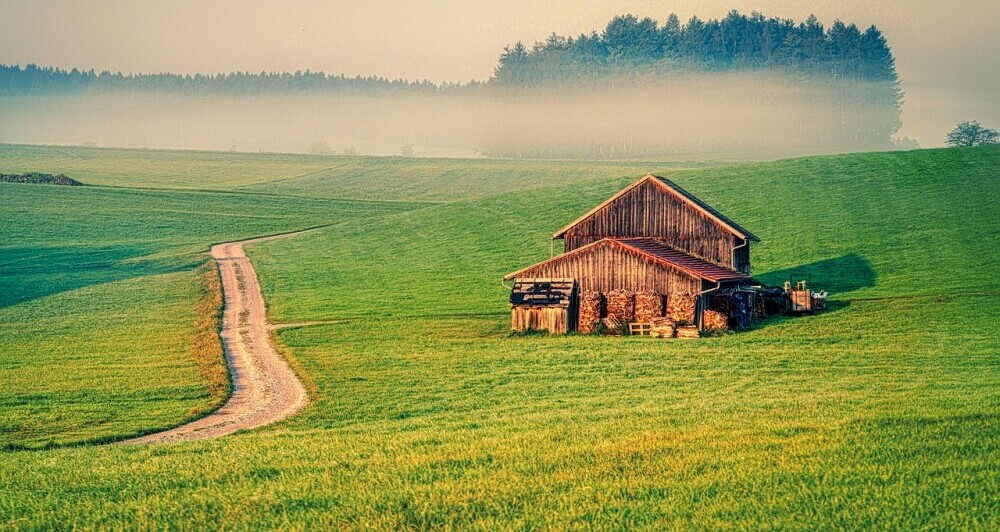Hey there, fellow homesteader at heart!
If you’re anything like me, the dream of self-sufficiency, living off the land, and connecting with nature has been your goal for a long time. Well, it’s time to stop dreaming and start doing, because today we’re diving into the nitty-gritty of where to find the perfect homestead location. Let’s embark on this thrilling adventure together, exploring factors like climate, soil quality, and proximity to resources that will help you make the best choice for your homesteading journey.
Step 1: Define Your Homesteading Vision
Before you start scouting for the perfect piece of land, it’s crucial to have a clear vision of what you want your homestead to look like. What’s your primary goal? Are you in it for sustainable living, a more relaxed lifestyle, or to produce and sell your own goods? The answers to these questions will guide your choices in finding the ideal location.
Step 2: Climate Considerations
Climate is a massive factor in homesteading success, as it significantly affects what you can grow and how you’ll need to adapt. I mean, you can’t grow mangoes in Alaska, right? Take a moment to research the climate of the region you’re considering. Do you want four distinct seasons, or would you prefer a more temperate climate? Consider temperature, rainfall, and the length of the growing season. Ensure that the climate aligns with your vision for your homestead.
Step 3: Soil Quality Matters
Good soil is like a blank canvas for the artist in you (the farmer-artist, of course). The type of soil on your homestead will directly impact your ability to grow crops and raise livestock. We’re not all blessed with the lush, fertile soil of the Midwest, so it’s essential to understand what you’re working with.
Start by getting a soil test from your potential homestead location. Local agricultural extension offices are often happy to help with this. You’ll learn about the soil’s pH, nutrient content, and texture, which can be clay, silt, or sand. A loamy soil, a balance of these textures, is the holy grail for gardeners. If the soil isn’t perfect, don’t fret – you can amend it over time.
Step 4: Water Sources and Availability
As any good homesteader knows, water is life. Make sure your potential homestead has a reliable and clean water source. Check for nearby rivers, ponds, or wells. Access to clean water is a non-negotiable. You’ll need it for drinking, irrigation, and keeping your animals happy and hydrated. And trust me, hauling water from miles away gets old fast.
Another popular choice for many homesteaders is setting up a rainwater harvesting system. These systems collect rainwater from your roof and channel it into a storage tank. It’s a fantastic way to ensure a constant and sustainable water supply for your homestead. However, do check local regulations and make sure that collecting rainwater is legal in your area. Some places have restrictions on rainwater harvesting, so you want to avoid any potential legal issues.
Step 5: Proximity to Resources
While the idea of living completely off the grid might sound enticing, proximity to essential resources should not be underestimated. Consider the distance to the nearest town or city, as well as the availability of supplies like building materials, seeds, and veterinary services. It’s also helpful to be relatively close to neighbors – not too close for a lack of privacy, but not too far for assistance in case of emergencies. That sense of community can be a lifeline in more ways than one.
Step 6: Legal and Zoning Regulations
The fine print, nobody’s favorite part, but it’s crucial. Research the local zoning laws and regulations in the area you’re eyeing for your homestead. You don’t want to end up in a situation where your chickens are considered a nuisance. Make sure that you understand any land use restrictions, permitting requirements, and property taxes. It’s the responsible thing to do, and it’ll save you from future headaches.
Additionally, you should be aware of any conservation easements on the property, which may limit your ability to develop or alter the land. These legal encumbrances can have a significant impact on your plans, so it’s wise to thoroughly review any legal documents related to the property before making a purchase.
Step 7: Infrastructure and Accessibility
Think about the existing infrastructure on the property. Does it already have a house, barn, or other outbuildings that could save you time and money on construction? How accessible is the property during all seasons? Snowed-in homesteads might sound romantic, but they can also be quite isolating and challenging.
Step 8: Wildlife and Natural Hazards
Understanding the local wildlife and natural hazards is vital. If you’re in a region prone to wildfires, hurricanes, or tornadoes, you need to plan accordingly. Also, familiarize yourself with the local wildlife – both the cute and cuddly and the potentially pesky. Some animals may pose a threat to your crops and livestock, so be prepared for some friendly cohabitation negotiations.
Step 9: Transportation and Commute
Consider your daily life and how you’ll be commuting. Will you still need to work a regular job off the homestead? If so, think about the daily commute. Can you access your workplace without too much hassle? Remember, a long daily commute can eat into your precious time for homesteading activities.
Step 10: Budget and Affordability
Last but not least, it’s time to crunch the numbers. Can you afford the property you’ve got your eye on? Don’t just consider the purchase price but also ongoing costs, such as property taxes, insurance, and maintenance. Make a budget and ensure that your homesteading dreams are financially sustainable.
Final Thoughts

Whew, that’s a lot to take in, but hey, you’re about to embark on a life-changing adventure! Choosing the perfect homestead location is like finding your soulmate; it’s got to be the right fit for your personality and your vision. So take your time, do your research, and don’t be afraid to seek advice from experienced homesteaders. After all, we’re all in this together, and the homesteading community is filled with friendly folks willing to help out a newbie.
Happy homesteading, my fellow pioneer of the land! Remember, there’s no rush in finding your perfect homestead location, and the journey is just as important as the destination. May your future homestead be a sanctuary of self-sufficiency and a haven of happiness!
As always, please comment below with any questions, or suggestions on how to make this post more valuable to you!

